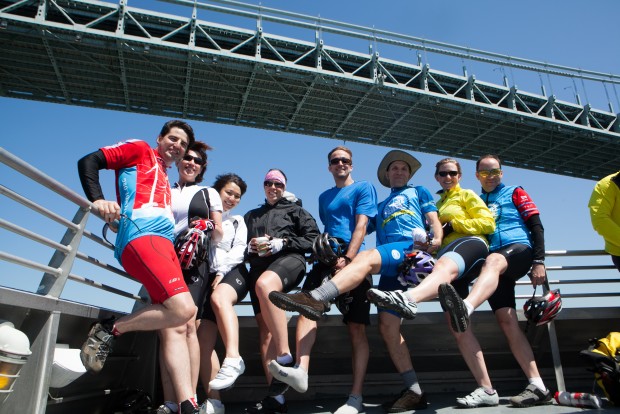According to the March 2014 issue of Bicycling Magazine, 43% of the 5,000 cyclists polled described their relationship with their saddle as “complicated.”

Finding the right seat can be a lot like dating. Most cyclists need to try a few different saddles before finding one that works for them. Although some may seem great in the beginning, in the long run, they can become a real pain. Others, while a bit awkward at first, can become lifelong partners that you travel the world with.
There are various seat shapes and materials to choose from but the only way to find out if a seat works for you is to ride on it.

For long distance rides like Climate Ride, bigger and softer does not necessarily mean more comfortable. The more you sink into a seat, the more contact the seat makes with your backside and legs. This leads to friction, heat, and eventually chaffing.
Padding can be beneficial if it is the form of a chamois, as found in most cycling shorts. Like seats, these shorts have various shapes and thicknesses and will vary in comfort depending on your personal preferences.

There are also varieties of chamois cream that reduce friction inside your shorts. While training, be sure to always have a clean pair of cycling shorts and avoid wearing underwear to reduce the risks of saddle sores.
If your sit bones aren’t resting on the back third of your seat, try moving your seat forward or backwards on its rails. Your endurance in the saddle will be greatest when weight is distributed properly across your body, and when you’re seated on your sit bones.
No two behinds are alike, and that is especially true between genders. A woman’s sit bones are generally further apart than a man’s. Women specific saddles are becoming more popular and are worth considering for those with wider sit bones. In addition to being a little bit wider, these seats often have a cutout or softer material in the center of the seat for a more comfortable ride.
Once you have found a comfortable seat, fine adjustments can be made to the seat tilt. For men, it is more typical to tilt the front of the seat up or ride with the seat parallel to the ground. Most women will find more comfort on a saddle that is slightly pointed down in the front.

No matter what seat you buy, remember that a new seat is like a new pair of boots. Breaking it in takes time, sweat, and miles. If you are new to cycling or have not ridden long distances before, you may need to ‘break in’ your backside too, to get it accustomed to riding for extended periods of time.
Make some seat adjustments, try a new one, or put on some cycling shorts and your relationship with your saddle might not be so “complicated.”